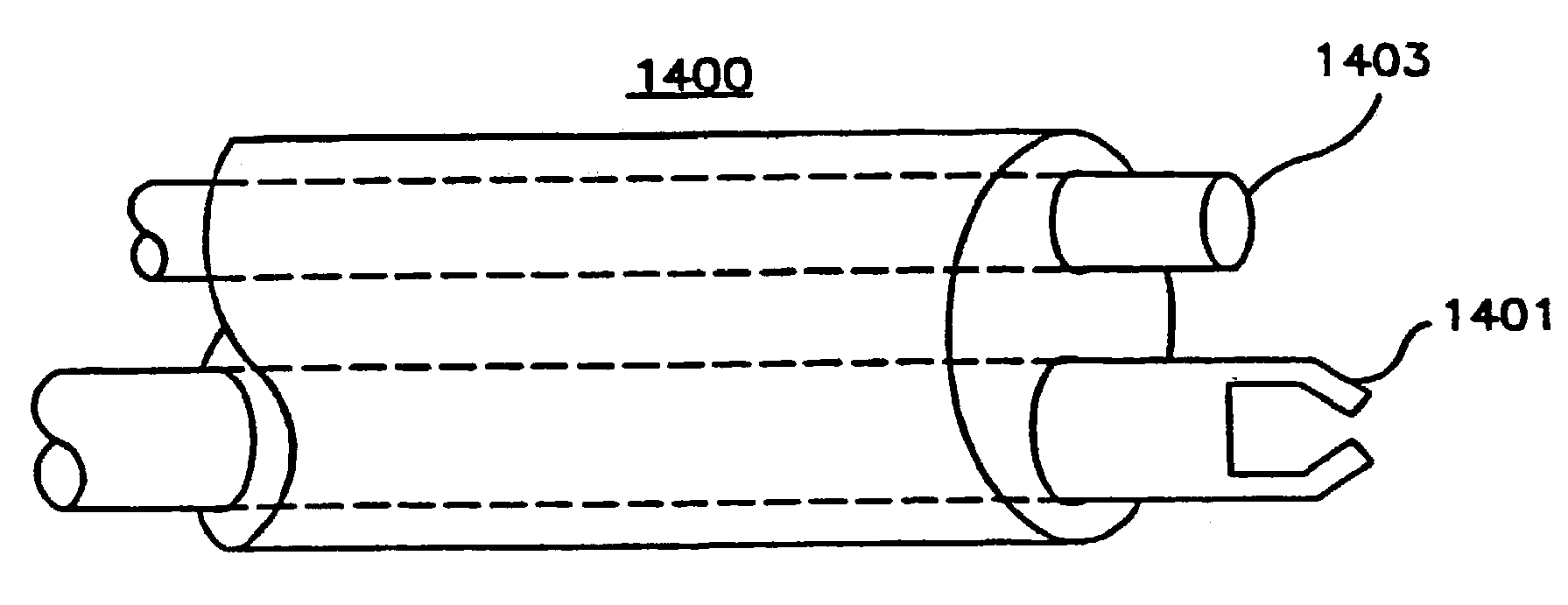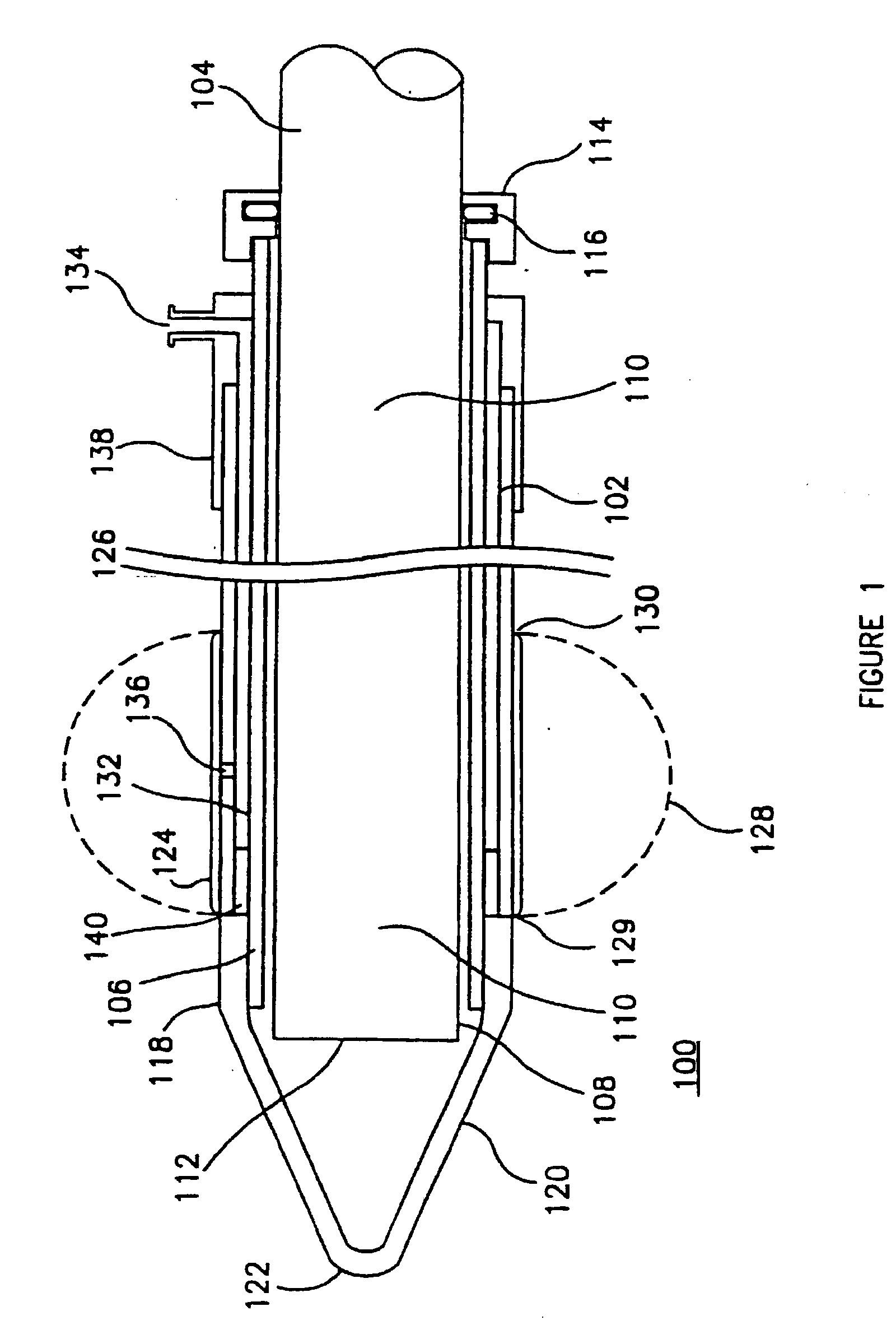Tissue Dissection Method
a cannula and tissue technology, applied in the field of cannula separation of tissue, can solve the problems of blood vessel avulsion and trauma to tissue and internal organs, difficulty in everting balloon type, and difficulty in reducing visual distortion
- Summary
- Abstract
- Description
- Claims
- Application Information
AI Technical Summary
Benefits of technology
Problems solved by technology
Method used
Image
Examples
Embodiment Construction
[0033]In accordance with one embodiment of the present invention, a cannula includes a tubular body having proximal closed end and distal blunt end, at least one lumen extending the length of the body, an endoscope having a lighted, viewing end disposed in the lumen near the distal end of the body, and a transparent, tissue separating member substantially covering the distal end of the body and selectively removable from the distal end. The present invention also includes methods for using such a cannula for separating tissue to form an elongated cavity along the course of a small blood vessel and subsequently harvesting the blood vessel, or using the blood vessel as an in-situ graft.
[0034]FIG. 1 shows an embodiment of the cannula 100 of the present invention. The cannula 100 includes a tubular body 102 having a proximal end 104 and a distal end 106. At least one lumen 108 extends the length of the body 102. Disposed in the lumen 108 is an endoscope 110 having a lighted, viewing end...
PUM
 Login to View More
Login to View More Abstract
Description
Claims
Application Information
 Login to View More
Login to View More - R&D
- Intellectual Property
- Life Sciences
- Materials
- Tech Scout
- Unparalleled Data Quality
- Higher Quality Content
- 60% Fewer Hallucinations
Browse by: Latest US Patents, China's latest patents, Technical Efficacy Thesaurus, Application Domain, Technology Topic, Popular Technical Reports.
© 2025 PatSnap. All rights reserved.Legal|Privacy policy|Modern Slavery Act Transparency Statement|Sitemap|About US| Contact US: help@patsnap.com



